Are you interested in knowing what the best flowers that bloom in summer and winter are? Well, we have collected a list of the top 35 best annual and perennial blooming flowers with pictures so that you can easily learn about, and identify them!
An annual flower is known to be a temporary visitor in the garden as once they sprout from seed and bloom, they only live for one year or one season, thereafter they die and need to be replanted. This is different from perennial flowers as these types of flowers bloom for a few seasons and do not need to be replanted as frequently.
Below are a bunch of tips and some good advice to consider when growing these types of flowers in your garden. Follow the below advice to keep your garden bright and blooming.
Contents
- 1 35 of the Best Annual Flowers in a List with Pictures
- 1.1 Rosy Sunray (Rhodanthe chlorocephala)
- 1.2 Bluemink (Ageratum houstonianum Mill.)
- 1.3 Sweet alyssum (Alyssum maritimum)
- 1.4 Gypsophila (Showy baby’s Breath)
- 1.5 Bells-of-Ireland (Moluccella laevis)
- 1.6 Swan River Daisy (Brachyscome iberidifolia)
- 1.7 Clarkia ( Clarkia elegans)
- 1.8 Calendula/Marigold (Calendula officinalis L.)
- 1.9 Cornflower (Centaurea cyanus)
- 1.10 Cosmos (Cosmos bipinnatus)
- 1.11 Chrysanthemum (Chrysanthemum carinatum)
- 1.12 Coreopsis tinctoria (Coreopsis tinctoria)
- 1.13 Canterbury Bell (Campanula medium)
- 1.14 Delphinium (Delphinium Consolida)
- 1.15 Godetia (Goditia grandiflora)
- 1.16 Morning Glory (Ipomea heavenly)
- 1.17 Sweet pea (Lathyrus odoratus)
- 1.18 Linaria (Linaria maroccana)
- 1.19 Annual Mellow (Lavatera trimestris)
- 1.20 Flox (Linum grandiflorum)
- 1.21 Honesty (Lunaria annual)
- 1.22 Malope (Malope trifida)
- 1.23 Ice Plant (Measem-bryanthemum)
- 1.24 Nemesia (Nemesia strumosa)
- 1.25 Tobacco Plant (Nicotiana alata)
- 1.26 Poppy (Papaver rhoeas)
- 1.27 Phlox (Phlox drummondii)
- 1.28 Primula (Primula variabilis)
- 1.29 Painted tongue (Salpiglossis sinuate)
- 1.30 Black-eyed Susan flower (Thunbergia alata)
- 1.31 Nasturtium (Tropaeolum majus)
- 1.32 Ursinia (Ursinia anethoides)
- 1.33 Pansy (Viola tricolor)
- 1.34 Viscaria (Viscaria oculata)
- 1.35 Cocks comb (Celosia argentea cristata)
- 2 Factors for Success
- 3 Benefits of Growing Flowers
- 4 Considerations when purchasing the seeds
- 5 How to grow and harvest your blooming flower
35 of the Best Annual Flowers in a List with Pictures

Rosy Sunray (Rhodanthe chlorocephala)
Cultural Requirements:
These flowers need soil with a good drainage system such as sandy soil types. Always keep the soil moist and allow these plants to grow in full direct sunlight. Plant these seeds about 15-20 com away from each other.
Seed Germination: 5-7 days.
Plant Height: 24-30 cm.
Flower Color: Pink or white with a yellow center.
Uses: cut flowers can be arranged to decorate. Blooming flowers give your garden color.

Bluemink (Ageratum houstonianum Mill.)
Cultural Requirements: These flowers need rich Soil with a good drainage system such as garden soil with compost. They need less water than most plants but should always be in moist soil. Bluemink flowers grow best in full sun with some afternoon shade. Plant these seeds about 20-25 cm away from each other.
Seed Germination: 4-5 days.
Plant Height: 16-20 cm.
Flower Color: Purple or silver-blue.
Uses: The plants make excellent borders and look great in window boxes and pots. They add great color to your garden and their cut flowers can be used to decorate.
_(6995044097).jpg)
Sweet alyssum (Alyssum maritimum)
Cultural Requirements: These flowers enjoy soil that is not too rich but has a good drainage system such as more sandy soils. They grow best in full direct sunlight with afternoon shade and at a medium humidity level. Plant these seeds about 10-15 cm away from each other.
Seed Germination: 5-7 days.
Plant Height: 8-15 cm.
Flower Color: White, deep purple, and light pink.
Uses: These plants will make great borders in your garden, and they look stunning in window boxes or pot plants. Alyssums are also great at attracting pollinators such as bees.

Gypsophila (Showy baby’s Breath)
Cultural Requirements: These flowers grow best in any well-drained soil that has low levels of acidity. They need full direct sun and are very low maintenance. Plant these seeds about 25-30 cm away from each other.
Seed Germination: 5-7 days.
Plant Height: 30-60 cm.
Flower Color: Mainly white and pink but can come in other many colors.
Uses: These flowers can be cut and used in dried bouquets.

Bells-of-Ireland (Moluccella laevis)
Cultural Requirements: These plants can grow in any garden soil that is moist, and well-drained. These flowers need full direct sun, however, they do not do well with high temperatures, and optimally grow when it’s cold. Plant these seeds about 30-40 cm away from each other.
Seed Germination: 8-10 days.
Plant Height: 40-60 cm.
Flower Color: Green bell-shaped, covered with small white flowers.
Uses: These flowers are excellent for cut arrangements and dried bouquets.
Swan River Daisy (Brachyscome iberidifolia)
Cultural Requirements: These flowers can grow in any garden soil and full direct sunlight. They do not tolerate shaded areas very well.
Seed Germination: 5-7 days.
Plant Height: 15-20 cm.
Flower Color: Lavender, blue, pink, or white.
Uses: These flowers can be used for bedding in gardens to add bright color.
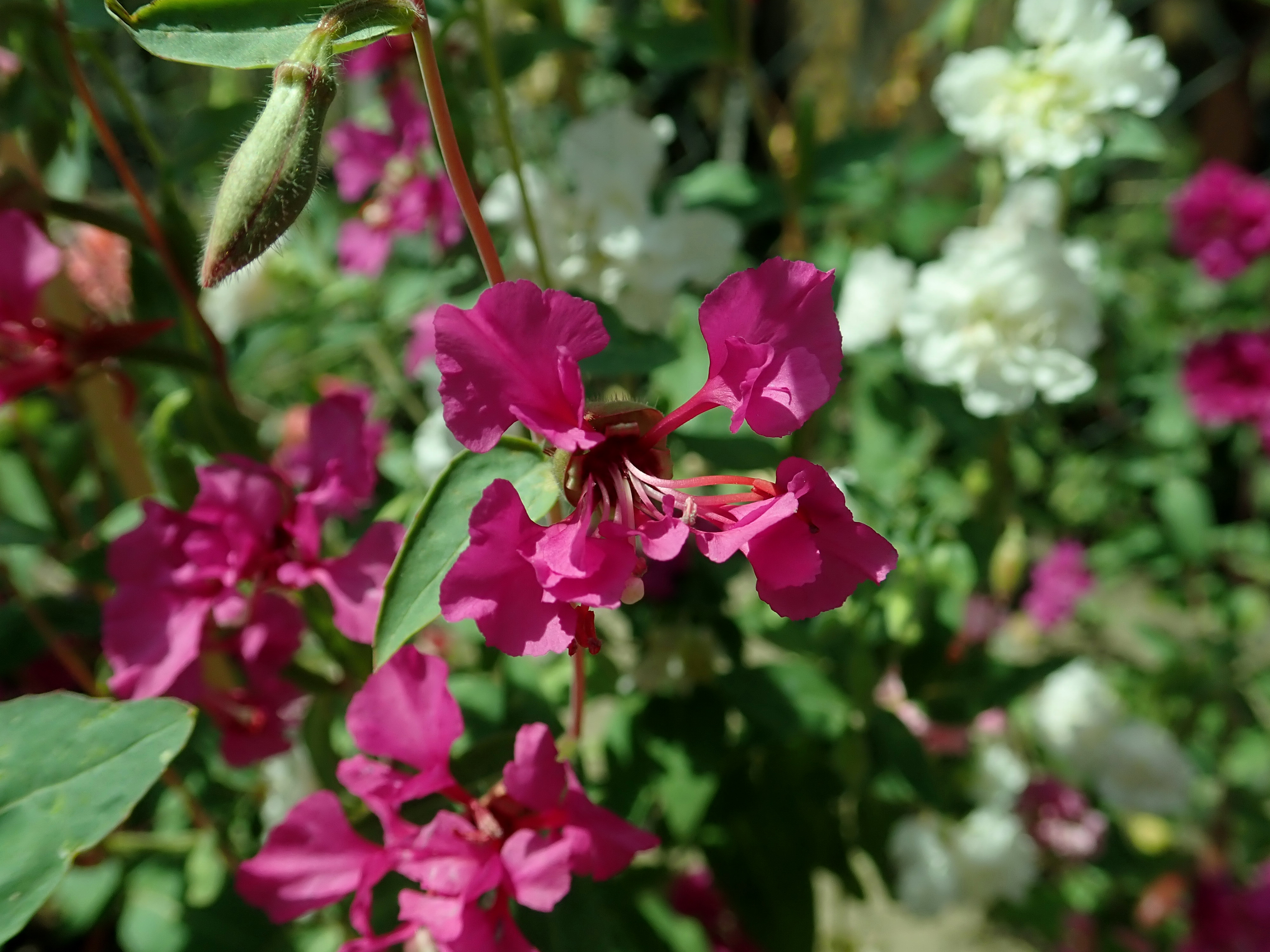
Clarkia ( Clarkia elegans)
Cultural Requirements: These plants need full direct sunlight to grow and do best in well-drained, slightly acidic soil. These flowers can grow in poorly fertilized soil and love humid conditions. Plant the seeds about 25-30 cm away from each other.
Seed Germination: 6-8 days.
Plant Height: 30-60 cm.
Flower Color: Pink, white, purple, and lilac.
Uses: These flowers can be used to bring bright colors into your garden.
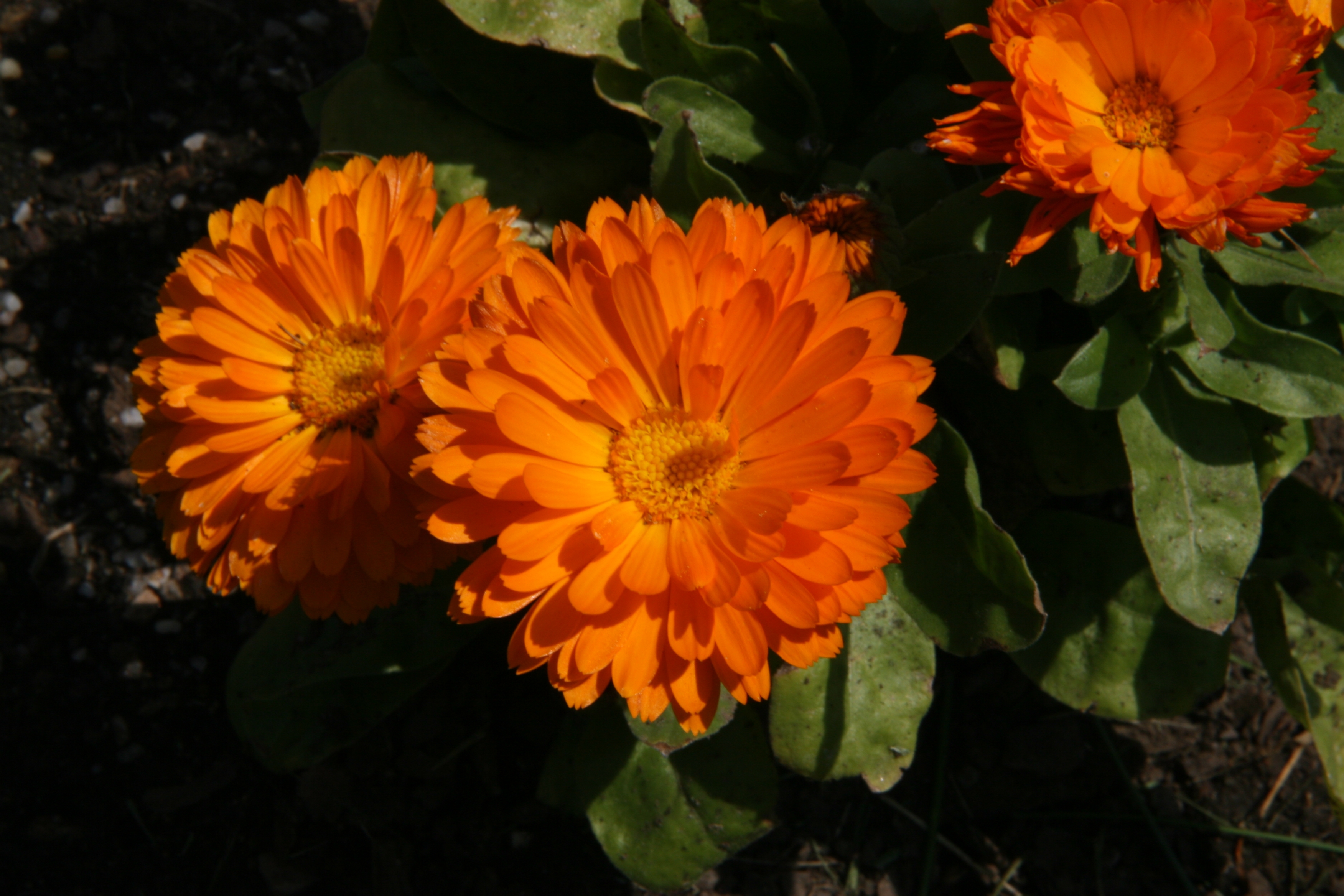
Calendula/Marigold (Calendula officinalis L.)
Cultural Requirements: These flowers thrive best in cool to cold weather and may dry out and die if it’s too hot. They prefer normal garden soil and can grow well in poor-quality soil. Plan these flowers about 30-45 cm away from each other.
Seed Germination: 4-6 days.
Plant Height: 20-30 cm.
Flower Color: Golden-yellow, orange, and red.
Uses: These flowers are used in garden beddings for long-season bloom and add a stunning color. They also attract many butterflies and other pollinators.
-_New_Holland-_North_Lincolnshire.jpg)
Cornflower (Centaurea cyanus)
Cultural Requirements: These flowers grow best in full direct sunlight with a bit of afternoon shade. They prefer medium well-drained soils such as loam soil. Plant these seeds about 20-30 cm away from each other.
Seed Germination: 5-7 days
Plant Height: 20-30 cm.
Flower Color: Dark to light blue.
Uses: These flowers are used to decorate and add color to your garden, or as cut flowers in an arrangement.
.jpg)
Cosmos (Cosmos bipinnatus)
Cultural Requirements: These flowers grow best in full direct sun. They prefer well-drained soil such as loam soil. These flowers do not need as much water as other flowers but their soil should be kept moist. Plant these seeds about 30-40 cm away from each other.
Seed Germination: 5-7 days.
Plant Height: 30-40 cm.
Flower Color: Red, pink, white, and yellow.
Uses: These flowers are great to use for bedding in your garden as they add beautiful bright colors.
Chrysanthemum (Chrysanthemum carinatum)
Cultural Requirements: These plants grow best in full sunlight and light soil based on lime. Plant these seeds about 25-30 cm away from each other.
Seed Germination: 5-7 days.
Plant Height: 30-60 cm.
Flower Color: White, pink, yellow, and red.
Uses: These flowers are used for beddings and in pot plants to add bright color to gardens and homes. They are also used as cut flowers in arrangements and bouquets.
Coreopsis tinctoria (Coreopsis tinctoria)
Cultural Requirements: these plants grow best in full sun and prefer medium soil. They need less water than most plants but should be kept moist. Plant these seeds about 20-30 cm away from each other.
Seed Germination: 6-8 days.
Plant Height: 30-50 cm.
Flower Color: Golden with red centers.
Uses: These flowers are used for beddings in gardens and as cut flowers for decoration.
Canterbury Bell (Campanula medium)
Cultural Requirements: These plants grow best In the sun with partial shade. They need less water than most plants and can grow in any type of garden soil. Plant these seeds about 40-35 cm away from each other.
Seed Germination: 8-10 days.
Plant Height: 30-50 cm.
Flower Color: White, mauve, and blue.
Uses: The flowers can are excellent to use in rock gardens and for edgings.

Delphinium (Delphinium Consolida)
Cultural Requirements: These flowers grow best in sunny areas with light shade. They can grow in any well-drained garden soil and need less water than most other plants. Plant these seeds about 40-50 cm away from each other.
Seed Germination: 5-7 days
Plant Height: 30-90 cm.
Flower Color: White, pink, red, and blue.
Uses: These flowers are used for borders and are used as cut flowers in arrangements.
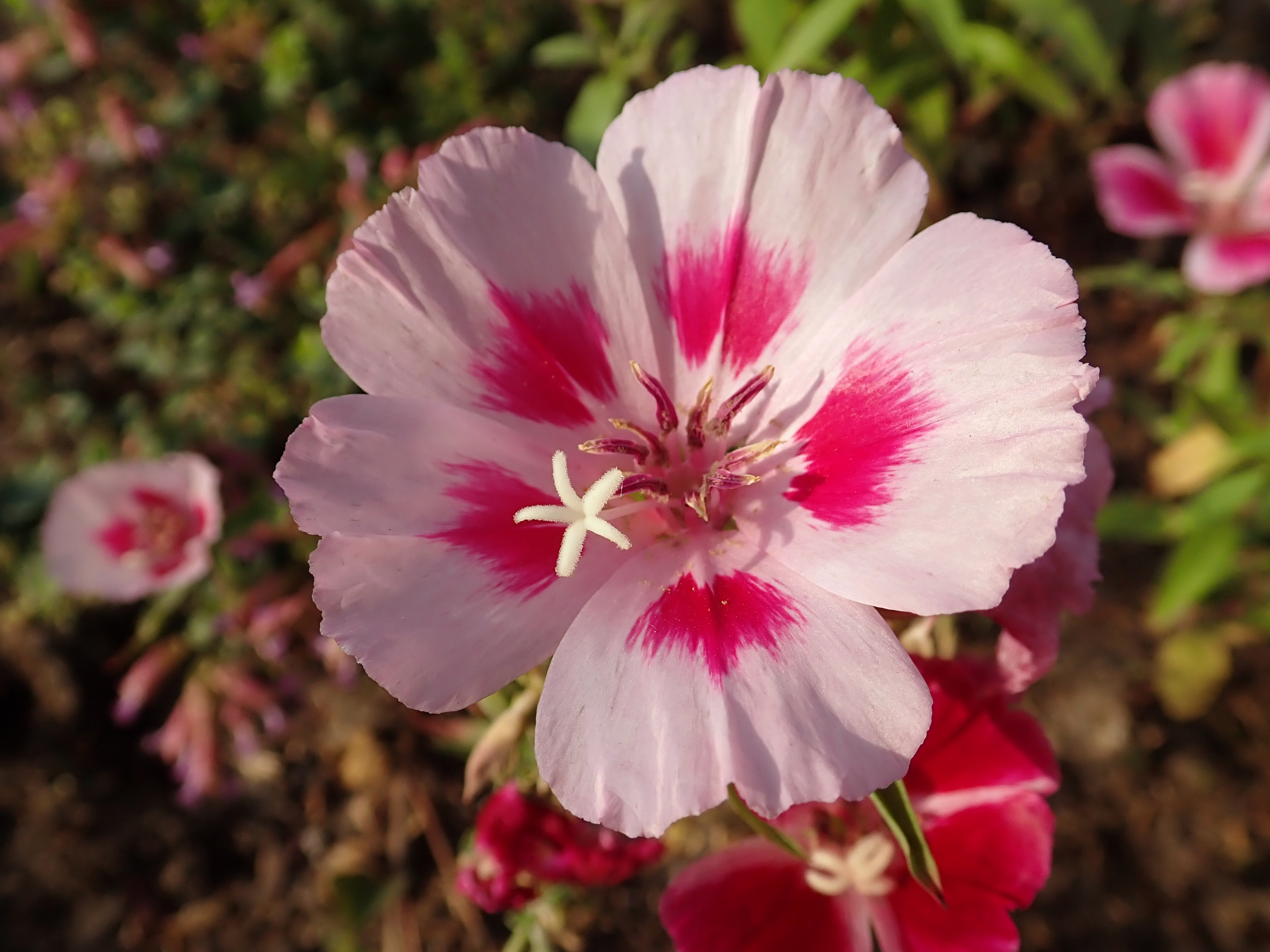
Godetia (Goditia grandiflora)
Cultural Requirements: These flowers grow best in full sun and prefer light to medium soi with low acidity levels. Plant these seeds about 25-30 cm away from each other.
Seed Germination: 7-10 days.
Plant Height: 30-50 cm.
Flower Color: Pink, white, red, and purple.
Uses: These flowers are used in garden beddings.

Morning Glory (Ipomea heavenly)
Cultural Requirements: These plants grow best in sunny areas that are sheltered. They prefer well-drained soil and need less water than most other plants. Plant these seeds about 30-40 cm away from each other.
Seed Germination: 5-7 days.
Plant Height: Climber
Flower Color: Blue and white striped.
Uses: These plants are used in pot plants and as borders. These climbers are great as tall borders as they provide privacy.
Sweet pea (Lathyrus odoratus)
Cultural Requirements: These plants grow best in sunny sites where it is warm. They prefer moist conditions and well-fertilized soil with farm manure. Plant these seeds about 15-25 cm away from each other.
Seed Germination: 8-10 days.
Plant Height: Climber
Flower Color: Pink, purple, red, and white
Uses: These lants are mostly used as cut flowers in arrangements for decoration.

Linaria (Linaria maroccana)
Cultural Requirements: These plants grow best in direct sun with a bit of afternoon shade. They prefer moist conditions and well-drained garden soil. Plant these seeds about 15-20 cm away from each other.
Seed Germination: 5-7 days.
Plant Height: 20-30 cm.
Flower Color: Pink and purple.
Uses: These plants are mostly used by planting in rockery and pot plants.

Annual Mellow (Lavatera trimestris)
Cultural Requirements: These plants grow best in direct sun or light shade. They prefer moist conditions and well-drained garden soil. Plant these seeds about 35-60 cm away from each other.
Seed Germination: 6-8 days.
Plant Height: 60-80 cm.
Flower Color: Pink and white striped.
Uses: These flowers are used as borders and their cut flowers are used for decoration.
.jpg)
Flox (Linum grandiflorum)
Cultural Requirements: These flowers grow best in full sun and prefer sandy loam soil with less watering than other plants. Plant these seeds about 20-30 cm away from each other.
Seed Germination: 5-7 days.
Plant Height: 20-30 cm.
Flower Color: Scarlet, blue, and pink.
Uses: These flowers are used in garden beddings and their cut flowers are used in flower arrangements.

Honesty (Lunaria annual)
Cultural Requirements: These flowers grow best in direct sun with light shade and moist conditions. They prefer well-drained garden soil with very low levels of acidity.
Seed Germination: 10-12 days.
Plant Height: 60-90 cm.
Flower Color: Blue, lilac, pink, gold, and white.
Uses: These flowers are used in garden beddings, under shade, and in pots.
Malope (Malope trifida)
Cultural Requirements: These flowers grow best in a sunny site with moist conditions. They prefer well-drained, light soil. Plant these seeds about 30-40 cm away from each other.
Seed Germination: 10-15 days.
Plant Height: 70-90 cm.
Flower Color: White, pink, crimson, and purple.
Uses: These flowers are used in garden bedding and their cut flowers as flower arrangements.
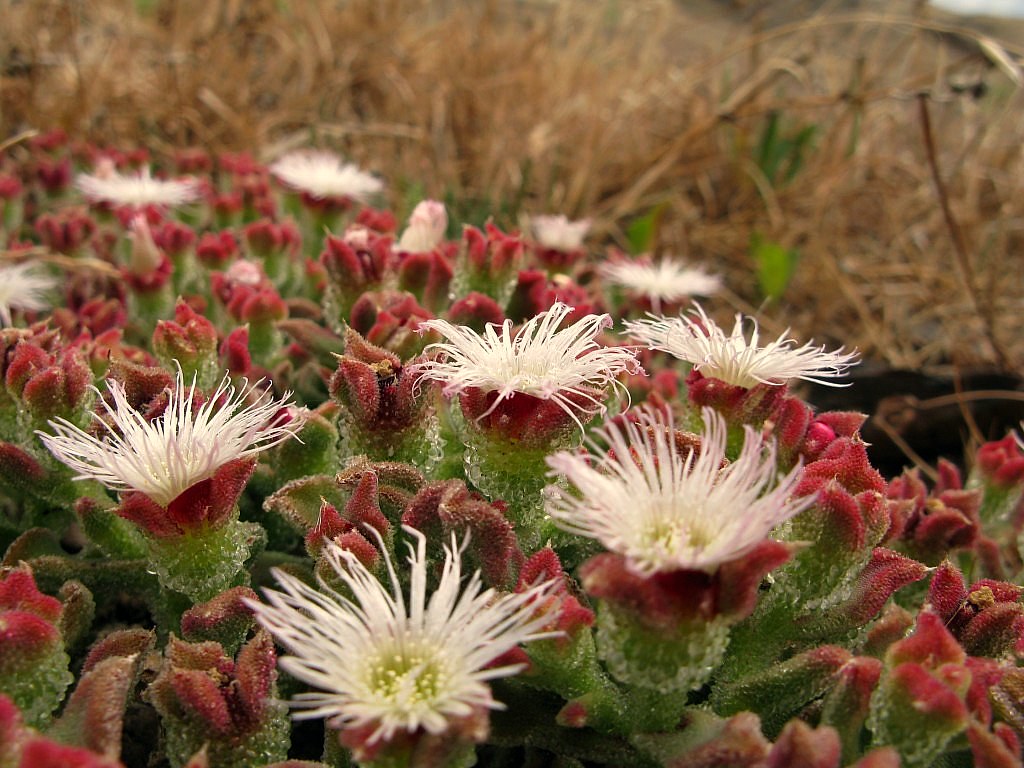
Ice Plant (Measem-bryanthemum)
Cultural Requirements: These plants grow best in sunny areas and prefer well-drained and sandy soil. Plant these seeds about 15-20 cm away from each other.
Seed Germination: 5-7 days.
Plant Height: 8-16 cm.
Flower Color: White, pink, red, orange, and yellow.
Uses: These flowers are used as ground cover, in garden beddings, and planted in the rockery.
_Nemesia_strumosa_KLM_-上海共青森林公園_Shanghai-_China-_(9255261062).jpg)
Nemesia (Nemesia strumosa)
Cultural Requirements: These flowers grow best in full sun or partial shade. They prefer moist conditions and lime-free garden soil. Plant these seeds about 15-20 cm away from each other.
Seed Germination: 5-7 days.
Plant Height: 20-30 cm.
Flower Color: red, yellow, and cream.
Uses: These flowers are used in pot plants and window boxes. Their cut flowers are used in flower arrangements.

Tobacco Plant (Nicotiana alata)
Cultural Requirements: this plant grows best in sun or light shade. They prefer moist conditions with medium, rich soil and manure. Plant these seeds about 15-20 cm away from each other.
Seed Germination: 6-8 days.
Plant Height: 20-80 cm.
Flower Color: lime green, yellow, and white.
Uses: These flowers are used in garden beddings.

Poppy (Papaver rhoeas)
Cultural Requirements: These flowers grow best in full sun or partial shade with less watering than most other plants. They can grow in any reasonable garden soil. Plant these seeds about 25-30 cm away from each other.
Seed Germination: 5-7 days.
Plant Height: 15-80 cm.
Flower Color: White, yellow, and orange.
Uses: These flowers are used as cut flowers in flower arrangements.
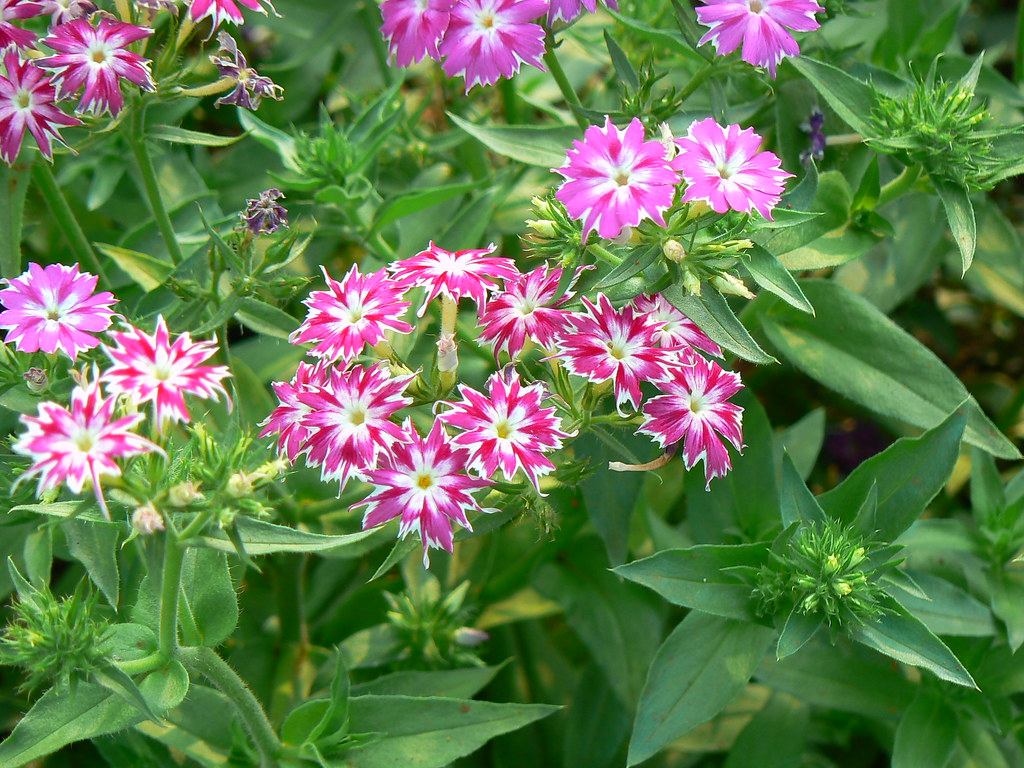
Phlox (Phlox drummondii)
Cultural Requirements: These flowers grow best in full sun with moist conditions. They can grow in any well-drained garden soil. Plant these seeds about 20-25 cm away from each other.
Seed Germination: 5-7 days.
Plant Height: 20-40 cm.
Flower Color: These flowers come in an array of bright colors.
Uses: These flowers are used in garden bedding and window boxes to add color.
.jpg)
Primula (Primula variabilis)
Cultural Requirements: These flowers grow best in partial shade and moist conditions. They prefer garden soil with farm manure and organic matter. Plant these seeds about 30-35 cm away from each other.
Seed Germination: 8-10 days.
Plant Height: 30-40 cm.
Flower Color: Yellow, orange, and lavender.
Uses: These flowers are used as borders and in garden beddings.
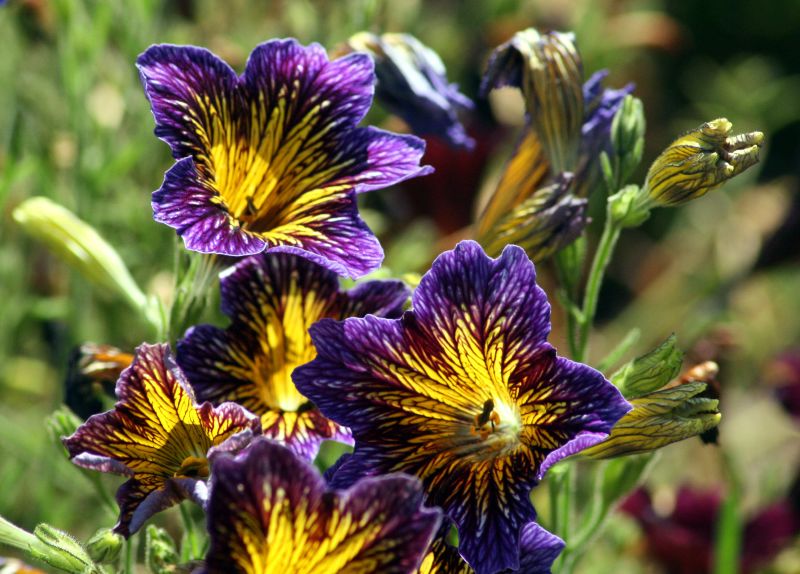
Painted tongue (Salpiglossis sinuate)
Cultural Requirements: These flowers grow best in partial shade or sun. They prefer moist conditions and can grow in any well-drained garden soil.
Seed Germination: 6-8 days.
Plant Height: 30-60 cm.
Flower colors: yellow, red, Purple.
Uses: These flowers are used in garden beddings and pot plants.
_with_orange_flowers.jpg)
Black-eyed Susan flower (Thunbergia alata)
Cultural Requirements: These flowers grow best in full direct sun and moist conditions. They can grow in any well-drained garden soil. Plant these seeds about 40-60 cm away from each other.
Seed Germination: 4-6 days.
Plant Height: Climber
Flower Color: Yellow, brown, and cream.
Uses: These flowers are used as vigorous climbers in pots and as borders.
Nasturtium (Tropaeolum majus)
Cultural Requirements: These flowers grow best in sun and with partial shade. They prefer sandy loam soil. Plant these seeds about 20-40 cm away from each other.
Seed Germination: 5-7 days.
Plant Height: Climber
Flower Color: Red, yellow, and orange.
Uses: These flowers are mostly used as climbers against walls.
Ursinia (Ursinia anethoides)
Cultural Requirements: These flowers grow best in full sun, and with less water. They prefer well-drained light soil. Plant these seeds about 15-25 cm away from each other.
Seed Germination: 5-7 days.
Plant Height: 20-35 cm.
Flower Color: Maroon and red.
Uses: These flowers are used in garden beddings.
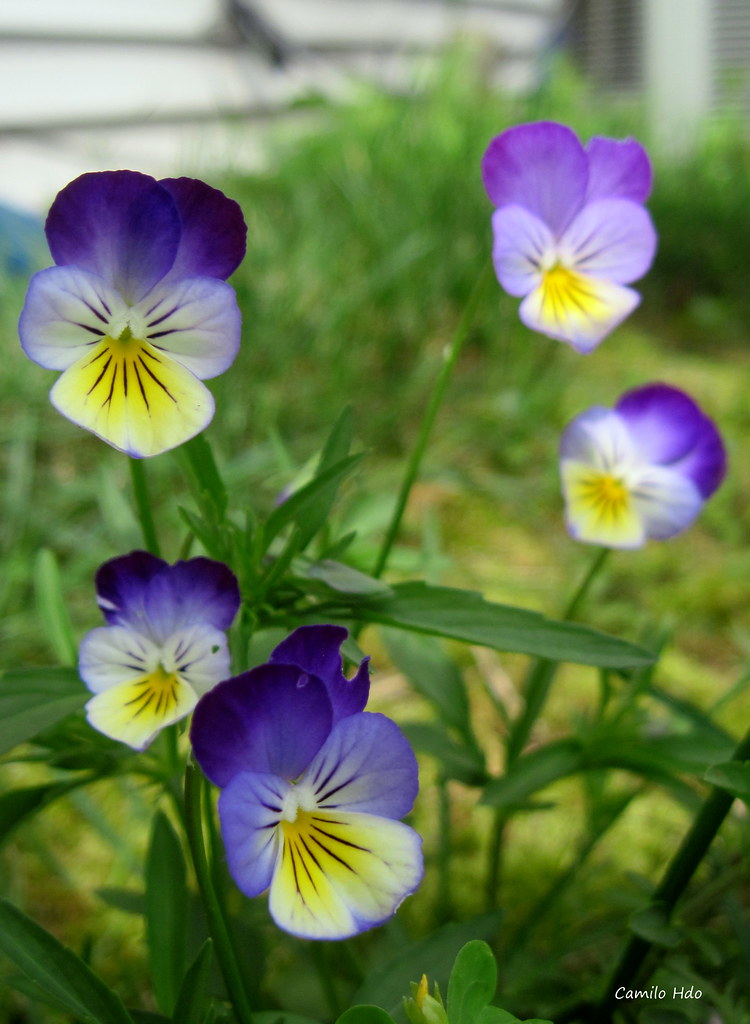
Pansy (Viola tricolor)
Cultural Requirements: These flowers grow best in direct sun with partial shade. They prefer moist conditions and reasonable garden soil. Plant these seeds about 20-30 cm away from each other.
Seed Germination: 5-7 days.
Plant Height: 15-30 cm.
Flower Color: Red, golden, Yellow, Orange, and white.
Uses: These flowers are used as borders, in garden beddings, and window boxes.

Viscaria (Viscaria oculata)
Cultural Requirements: These flowers grow best in sun with partial shade. They prefer moist conditions with well-drained garden soil. Plant these seeds about 15-20 cm away from each other.
Seed Germination: 6-8 days.
Plant Height: 15-30 cm.
Flower Color: White, red, lavender, purple, and blue.
Uses: These flowers are used in garden beddings and as cut flowers for decoration.

Cocks comb (Celosia argentea cristata)
Cultural Requirements: These plants grow best in full sun and moist conditions. They prefer garden soil that is rich in nutrients and has manure. Plant these seeds about 15-40 cm away from each other.
Seed Germination: 5-7 days.
Plant Height: 20-40 cm.
Flower Color: Red, yellow, orange, and maroon.Uses: These flowers are used in garden beddings and pots.
Factors for Success
When planting flowers in your garden, you can either use seeds or you can replant a flowering plant. if you choose to replant a flower then make sure that it is a strong, fast-growing plant that can easily adapt to its new environment.
Make sure that you prepare the soil correctly and thoroughly. This means making sure that the potting soil is the correct type of soil for the type of plant you want to grow. This includes ensuring your soil has organic material in it and that it can drain well. If the soil you are using is hard and dry your flowers will not thrive!
Plant your flower plants or sow your seeds at the correct time. You can identify when the best time is to do this by first identifying if your plants or annual or perennial plants. Most flowers should be planted in spring so that they can bloom in summer but this all depends on the type of plant you are growing.
Plant your flower plants or sow your seeds at a proper distance. If you plant the flowering plant or seeds too close together there will not be enough space for them to grow optimally! Make sure you leave a distance of about 15-20 inches depending on the size of your plant.
Benefits of Growing Flowers
Planting flowers is a great way to add large masses of color to your garden. Flowers create a beautiful environment and attract insects such as bees and butterflies that are great for the environment!
Annuals are great to plant as they provide borders of plantation and create low-edging walls. They grow quickly in both your garden and in pots and provide you with a large yield in a short amount of time.
Flowering plants are a great addition to your home or garden as they provide a beautiful smelling fragrance. For this reason, they can be used and extracted to make essential oils.
Considerations when purchasing the seeds
When purchasing seeds, make sure that you stick to buying fresh seeds instead of old seeds. Older seeds may sometimes be dormant and do not sprout. This can be quite frustrating so try to avoid dormant seeds by purchasing fresh, newer seeds and buying them when you want to plant them instead of storing them. Storing seeds can also lead to dormancy.
After you have purchased your seeds, make sure you keep them in a cool dry area until they are planted. This will ensure the viability of the seed. Do not buy seeds that look shriveled and underdeveloped.
Keep in mind when buying seeds that F1 are of a superior quality to F2 seeds. For this reason, you might want to do a bit of research on the seeds you’re admiring before you purchase them.
Lastly, always buy your seeds from a trustworthy nursey or home depot!
How to grow and harvest your blooming flower
Seed Sowing or replanting
The first step in making your garden bloom with color is to sow the seedlings or replant the plant into your garden. Before doing this ensure that the soil you’re about to plant into is clear of rubble or large pieces of organic matter. Always cultivate your soil using a spade so that the seedbed is firm and finely pulverized.
Use fertilizers in your soil to maximize the plant’s growth. Organic materials such as leaf decay and fruit or vegetable peels work well! You can also use a mixture of an 8:4:4 ratio NPK to add more nutrients to the soil.
When planting the seed make sure to place it about two to three inches in the soil or twice the size of the seed’s diameter. If you are replanting a plant make sure to plant it deep enough to cover all of its roots.
After planting the seed or plant, water it thoroughly with an adjusted nozzle for a fine mist. If the pressure is too high it might displace the seeds. Place a piece of newspaper over the seedbed to keep the soil moist. Remember to remove the newspaper when the seeds start to sprout.
It is also a good idea to plant the seeds in smaller wooden flats around five to eight cm big to minimize the risk of rain and wind damage. When the weather conditions are unfavorable you can simply bring the containers inside.
Transplanting
Once your seedlings have sprouted, it will be time to start transplanting them! Summer annual seedlings are best to transplant after two to three weeks of growth. If you are dealing with winter annuals it is best to transplant them after four to six weeks of growth.
Gently lift your sprouted seeds out of the small containers. Make sure you do this very carefully so that you do not damage any of the roots. The soil should be slightly moist but not completely damp when doing this.
Separate your plants carefully and allow as much soil as possible to remain in the roots of the plant. Once you have done this plant the flowering plant in the soil bed as soon as possible. Always remember to keep the roots slightly damp! For this reason, it might be better to replant during the evening or early morning, that way the sun won’t be able to dry the roots out.
Plants your flowering plant into the soil so that the soil covers all of its roots. Once you have done this, ensure the soil is firmly around the plant. water your plant thoroughly after transplanting it.
Watering
When it comes to watering your plant, only do so when it is necessary. Too much water can cause the plant and its roots to rot, and too little water can dry the plant and its roots out completely, both these issues can cause great damage to your plant!
Generally, you can tell when your plant needs to be watered by sticking a finger into the soil an inch or two deep, if the soil is dry then you need to water your plant, however, this does depend on the plant as different plants have different water requirements.
Water your plant until the soil is moist, do not let the soil get completely damp and soggy. Remember to always allow the soil to dry moderately before watering your plant again. Lastly, avoid watering the foliage and flowers on your plant as this might disturb them and make them susceptible to diseases.
Cultivation
It’s important to maintain your flower beds while your plants grow. This is done to allow adequate airflow in the soil and ensure that it is capable of draining water properly.
Use a hoe to turn the soil when the soil is moderately dry. Hoeing should not be too deep as this will cut and damage the roots of your plants. Make sure you remove all weeds in the soil bed when hoeing and pat down the soil firmly around your plants once you are done turning the soil.
Removal of Old Flowers
To maintain the steady growth of your and promote more shoots and flowers, remove the mature flowers and seed pod. This is especially essential for plants such as Ageratum, Calendula, Cosmos, Marigold, Pansy, Rudbeckia, Scabiosa ad Zinnia.
Cut your flowers
Early in the season when your plants begin to bloom flowers, they can be cut and removed to use for flower arrangements. Try and plants your flowering plants for cut flowers in separate sections of the garden. The best place to cut a plant is on its stem between the harder and softer area.
By cutting your flowers off the plant you will get a beautiful arrangement of blooming flowers and the cutting is also good for the plant as it stimulates it into growing more shoots and flowers. Older plants will have longer stems than newly-grown plants.
Drying Plants
Depending on the type of flower you are growing, it will need to be removed for drying purposes at a specific time! These are a few examples of flowers and when they should be removed for drying.
- Acroclinum - When the flowers are well-formed.
- Baby’s breath - When the flowers are well-formed.
- Cockscomb - When the flowers have bloomed in full color, and before seeds shed.
- Helichrysum - When the flowers are well-formed.
- Gaillardia - When the flowers have bloomed in full color, but before the petals dry.
- Globe Amaranthus - When the flowers have bloomed in full color, but before the petals dry.
- Lark-spur - When the oldest floral matures and the plant has formed a spike.
- Statics - When flowers are well-formed.
- Strawflower - When the buds begin to open.
- Zinnia - When the flowers have fully bloomed in color, and before the petals begin to dry.

 >
>